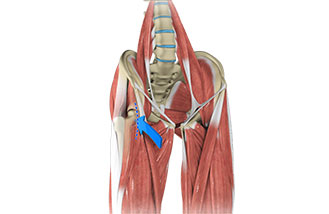 | Billing Questions: (833) 258-4717
| Billing Questions: (833) 258-4717
Online Bill Pay & Patient Portal | Request Medical Records / FMLA & Disability Forms
Our Blog
Advances in Anterior Hip Replacement

The anterior hip replacement is a relatively new surgical technique for replacing the hip joint. The surgeon makes an incision in the front portion of the hip through which the damaged joint is removed, and the new hip implant placed.
Over the last decade anterior hip replacement has become the preferred choice for many orthopedic surgeons and patients due to the many advantages it offers like: better implant positioning, minimized pain, quicker and smooth recovery, minimal muscular trauma, reduces the possibility of hip dislocations due to improved hip stability, increased self-dependence, improved mobility post operation and shorter hospital stay.
Given below are some of the advances that have contributed to the success of anterior hip replacement:
- Newer Implant Designs: Advanced designs such as mini-stems, curved shortened stems, or stems with reduced lateral shoulder have been shown in certain studies to minimize the risk of bone fracture. These variations in the implant designs have been conceptualized based on the experience and knowledge gained by the surgeons over many years.
- Preoperative Surgical Planning: Preoperative CT scans of the hip are fed into a computer to create 3D images which the surgeon can make a detailed preoperative plan before the surgery and even make real-time modifications to the plan during surgery.
- Intraoperative Imaging Technology: Smart phone and tablet-based apps can be used intra-operatively to correct for parallax and magnification errors to improve the accuracy of the surgical procedure.
- Anterior Approach Specific Instruments: These instruments assist with the retraction of tissue and broaching of bone with minimum damage to surrounding healthy structures.
- Better Analgesia: Better pain control achieved with continuous infusion catheters and intra-articular injections, and regional analgesia have greatly decreased postoperative pain.
- Blood Management: Proper blood management is critical during anterior hip replacement surgery due to the presence of circumflex blood vessels that can cause a lot of blood loss if not managed appropriately. Pharmacological agents that have been used in recent times include tranexamic acid, erythropoietin and iron. Physical agents include bipolar cautery sealer and plasma blades, which may improve hemostasis.
- Activity Monitors: These patient-based devices are either applications in smartphones or communicate with smart phones to prompt/track patient activity and can provide data to the operative team. They help in research or rehab efforts.
These technological innovations and advances in instrumentation have played a role in positive patient outcomes following anterior hip replacement.
The Carrell Clinic offers treatment for Hip, Knee, Spine, Shoulder, Elbow, Foot, Ankle and Sports-related conditions in Dallas, Texas. For all appointments & inquiries, please call (214) 220-2468.
